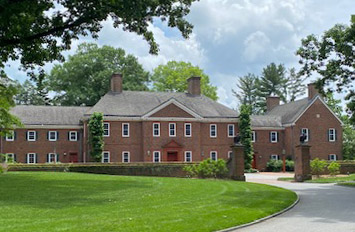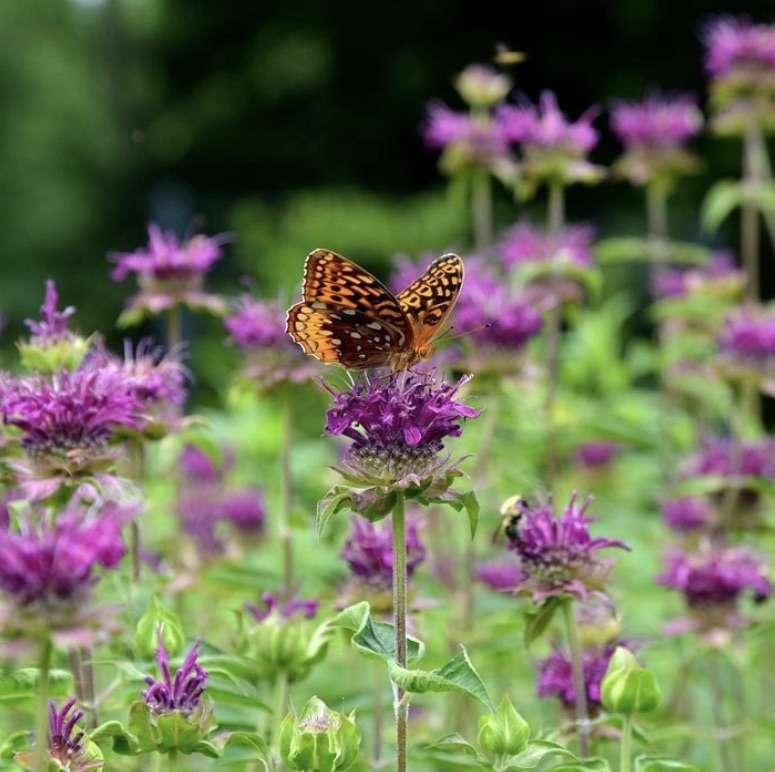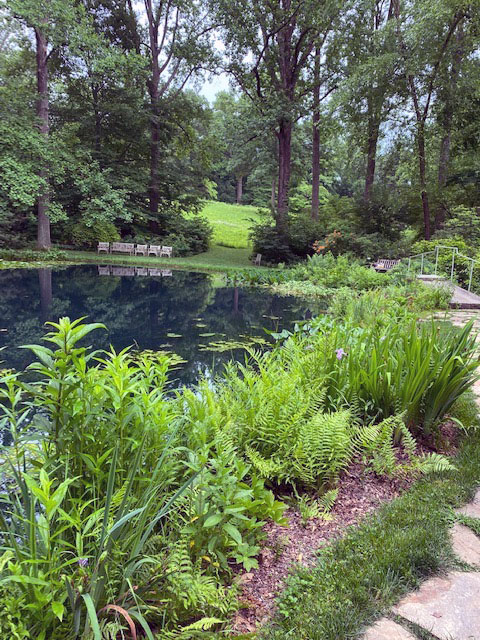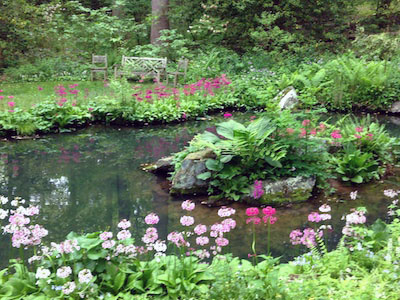Garden Like the DuPonts: Mt. Cuba
By Kathleen Ellen Driscoll, Fairfax Master Gardener Intern
 So much talk these days about using native plants as the inspiration of your garden. The newest gardening craze! Native plants…meaning plants that would naturally grow in your garden and thrive with very little adaptation on the part of the gardener.
So much talk these days about using native plants as the inspiration of your garden. The newest gardening craze! Native plants…meaning plants that would naturally grow in your garden and thrive with very little adaptation on the part of the gardener.
Alas! It may be more accurate to say everything old is new again . . .
In the 1940’s, Pamela Copeland took an interest in the wildflowers on her property, an interest that blossomed into a profound appreciation. This led her to emphasize native plants in the extreme when designing 250 acres of the gardens at her Mt. Cuba estate, near Wilmington, Delaware.
Who was Pamela Copeland, you wonder?
When it honored her with the 1991 Distinguished Achievement Award, the Pennsylvania Horticultural Society pronounced Pamela Copeland “a leader in the native plant naturalistic garden movement and an active proponent of conservation efforts and proper stewardship of our natural resources.” Impressive accolade for someone who started her career with an interest in wildflowers.

Pamela Cunningham Copeland
Born Pamela Cunningham, she met and married Lammot du Pont Copeland in 1929. Once the couple purchased 127 acres (51 ha) and established the family residence in Wilmington, Delaware, she debuted her horticultural skill with native plants with just a small wildflower garden. Like many a good gardener, her interest in cultivating plants, particularly those of the Mid-Atlantic area, ultimately expanded to a 250-acre estate of “thriving, ecologically functional gardens.” With nary an exotic invasive, barberry or nandina in sight, she sculpted from the former cornfields a bio-diverse, richly planted assembly of distinct garden areas. Moreover, if you are lucky, you may catch a glance of Trillium grandiflorum ‘Pamela Copeland,’ nestled among other spring woodland favorite ferns, Tiarella (foam flower) and Iris cristata.
Why all this interest in native plants of the Appalachian Piedmont?
The short answer is native plants are important visually, economically and environmentally. Native plants enliven your garden with brilliant colors and textures, while requiring less investment in fertilizer and water. Plants that naturally evolved in a region have the advantage to repel local pests, insects and disease, while attracting bats, bees, beetles, birds, butterflies, flies, moths, wasps, even small mammals, pollinators all which “feed” from one plant and pollinate another. And being local, they offer appropriate shelter and food for the wildlife of the region.

Monarda
In addition, the Copelands were very concerned about the land and the conservation and preservation thereof. Development — especially over-development — was a concern. Open space preservation and natural land management remain areas of focus even today.
Accordingly, Copelands contributed time, talent and treasure in support of many projects, such as Gunston Hall (VA), the White House (DC), Winterthur (DE) and Red Clay Reservation (DE). The family endowed the Mt. Cuba Center for the Study of Piedmont Flora to promote and protect the native plants and the environment.
Mt. Cuba
The Garden Club of America awarded Mrs. Copeland an Achievement Award Medal in 1987 “for her establishment of the Mt. Cuba Center, for her vision in preserving rare and endangered plants, and for her understanding of horticulture and conservation.” Even that vision pales in comparison to the present-day reality of a horticultural Mecca comprising botanical garden, trial garden and education center we encountered on a recent visit.

Lower pond and trail
A walk around the property reveals multiple garden space rooms, each with its own planting, its own character. The colonial revival house is surrounded by the Formal Garden, the South Terrace and Lilac Allée (sadly, past its prime during our June visit). If your preference runs to less formal native plantings and scenic trails, you won’t be disappointed sauntering along any of the paths. The Dogwood Path, West Slope Path or Woods Path all felt amazingly private and cool, even in June. In fact, we comfortably picnicked among the shady trees. Chalk it up to another benefit of the plants of the Piedmont.
My favorite space turned out to be the Copeland family fishing hole, so to speak: the stunning Pond Garden. These lovely double-level waterbodies attract numerous creatures: frogs, newts, toads and salamanders, birds and reptiles. It is the home to fish and attracts beneficial insects. We sat and absorbed the peace and quiet of the coolness while baby toads hopped around our feet into the ferns. Moss hugged the stones and a breeze murmured in the Cornus (dogwood), Sassafras and Liriodendron (tulip) trees. Such indigenous treasures, a veritable garden of delight enveloped us.
As cool and relaxing as the Pond Garden, the Trial Garden was equally sunny and exhilarating. In an eye-popping open garden field, the Trial Garden offered up beds of Echinacea, Monarda, Baptisia and Coreopsis. Research is conducted to determine horticultural and ecological values of the sample natives. The recent comprehensive study of Echinacea resulted in a Research Report being issued. Among the considerations were the pollinator preferred plants: single vs. double flower species. Happily, I was able to obtain an Echinacea purpurea, single flower variety with an average of 83 pollinator visits per minute! It is blissfully welcoming a lot of butterflies, bees and wasps in my garden.
I also managed to snag a gorgeous maroon-leafed Penstemon digitalis ‘Husker Red’ and the butterflies love it.

Pond garden
While we could not visit the Mt. Cuba Education Center, it is important to note that the Center confers a 158-hour Ecological Gardening Certificate, imparting methods to create beautiful landscapes of native plants, using ecologically sound garden practices and sustainable management techniques. In the past, the majority of classes are conducted on-site outdoors. However, beginning in 2020 on-line classes were offered; the on-site and on-line classes continue this summer. If you are curious about fall 2021 classes, you might want to check out the website about Mt. Cuba below.
As our visit was concluding, we recalled that while we do not have the resources of a king or a DuPont, Versailles was once merely a rustic lodge and Mt. Cuba was once only a patch of cornfields. Inspiration nudged us to set out a kitchen garden and plant a wildflower garden and we’ll see where it takes us.
References
• Bringing Nature Home, by Douglas W. Tallamy (2007)
• Upcoming Events & Gardening, Conservation, Art, and Wellness Classes, Mt. Cuba Center
• Echinacea Trials at Mt. Cuba Center, Sam Hoadley, Manager of Horticultural Research, (April 15, 2021),
Ecological Landscape Alliance
• Mt. Cuba Center, Wikipedia
• Pamela Cunningham Copeland, Wikipedia